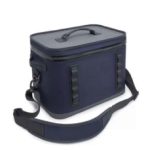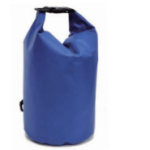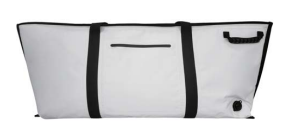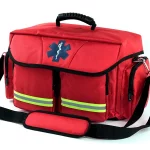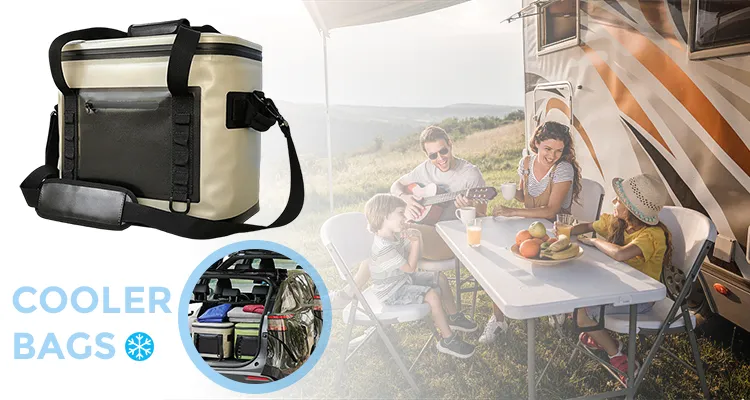Backpacks are important in outdoor adventures. Whether you are camping, hiking, fishing or doing any other type of outdoor activity; the backpack is like a portable house which carries all your food, drinks, equipment and other necessary things needed for survival in the wilderness. Therefore if you want to keep your food and drinks at the required temperature, it is good to learn how to insulate a backpack. Below are some effective techniques and tips that can enable you achieve maximum insulation.
1. Why Insulated Backpacks Are Important
Insulated bags are very useful in open air environments. Firstly they serve to preserve freshness by not allowing freezing or spoiling due to rapid change of temperatures on edibles as well as drinks. This should be given much consideration especially during cold seasons where failure to properly insulate may lead into freezing food stuffs, chilling beverages and even damaging fragile electronic gadgets.
1.1 The Importance of Insulation in Outdoor Environments
The outside world can sometimes have unpredictable weather patterns with huge differences witnessed within same day. In such scenarios an insulated bag creates uniform conditions throughout its interior thereby maintaining steady states for different types of foods plus liquids stored inside it. Such kind of protection becomes more significant when people go camping for several days or engage themselves in long distance walks where continuous nutrition supply alongside hydration is required without fail.
1.2 Suitable for Various Outdoor Activities
Insulated backpacks are suitable for a wide range of outdoor activities, including camping, hiking, fishing, kayaking, and more. Whether it’s the heat of summer or the chill of winter, an insulated backpack can meet the demands of various activities. It can also protect other sensitive items, such as electronic devices and medication, from temperature-related damage.

2. How to Choose the Right Insulation Materials
If your current backpack isn’t specifically designed for insulation, you can make some simple modifications to improve its insulation performance.
2.1 EVA Foam
An example of insulating material is EVA foam which is famous for being light in weight and having excellent thermal insulation properties. It helps to control temperatures so that your rucksack can keep foodstuffs cold for long. In addition, this type of foam has certain flexibility that allows it absorb shocks during outdoor activities thereby safeguarding items inside the bag.
2.2 Reflective Aluminum Foil
Reflective aluminum foil is capable of reducing heat loss by reflecting back the warmth into or out of any space. This stuff works as an inner lining material in most insulated backpacks hence creating another layer against losing heat through conduction. It’s also light weighted,strong enough and easy to fix up.
2.3 High-Density Insulation Materials
High-density insulation materials are typically used in high-end insulated backpacks to provide superior insulation performance. These materials work well in cold weather, ensuring that food and drinks stay at the desired temperature for extended periods.

3. How to Modify Existing Backpacks to Improve Insulation
If you have a normal backpack that does not have insulating properties there are simple changes you can make to enhance its insulation capabilities
3.1 Add Insulated Linings
An insulated lining is a removable layer that can be inserted into a backpack to enhance insulation. You can choose a suitable size and material, then sew or attach it inside the backpack. Insulated linings are typically made of EVA foam or reflective aluminum foil, providing an extra insulation barrier.
3.2 Use Insulated Dividers
Insulated dividers are used to separate different sections inside the backpack, helping maintain a stable temperature. These dividers are usually made of insulation materials and are easy to adjust and remove. Using dividers can also prevent food and drinks from affecting each other, keeping them fresh.
3.3 Use Insulated Bags
Placing food and drinks in insulated bags and then placing them inside the backpack can significantly improve insulation. Insulated bags typically consist of multiple layers of insulation material with excellent thermal insulation properties. This is a simple and cost-effective method, suitable for modifying existing backpacks.
4. How to Optimize Backpack Insulation
Proper packing and usage contribute significantly to the optimum insulation of a backpack. Here are some tips on how to optimize insulation performance:
4.1 Proper Packinga
Ensure that items in the bag are tightly packed so as to reduce air circulation which helps in maintaining warmth.Wrap cooling packs or ice cubes around them to maintain low temperatures.
4.2 Use Cooling Packs
Using cooling packs or ice packs can further keep the backpack interior cool. When packing, place these cooling agents in strategic locations to ensure that items inside the backpack stay cool.
4.3 Regular Inspection
Regularly check the zippers and seals of the backpack to ensure they are not damaged or leaking. If you find issues, fix them promptly to maintain the insulation performance of the backpack.

5. The Advantages of Professional Insulated Backpacks
In insulation performance and functionality, professional insulated backpacks have many variations compared to ordinary backpacks. This knowledge will help you make the best choice for an insulated backpack.
5.1 Design Features of Professional Insulated Backpacks
To maintain a stable internal temperature, professional insulated backpacks are usually equipped with high-quality airproof zips. Their external parts are created from long-lasting TPU tarpaulin which is not only waterproof but also resistant to abrasion. Moreover, they contain advanced insulating materials like high-density EVA foam that ensures excellent insulation performance.
5.2 Extra Features of Professional Insulated Backpacks
Apart from just offering insulation performance, these types of bags come with extra features. For instance, comfortable carrying is ensured through adjustable shoulder straps and ergonomic designs; additional pockets create room for small items while waterproof construction guarantees keeping them dry under wet conditions.

